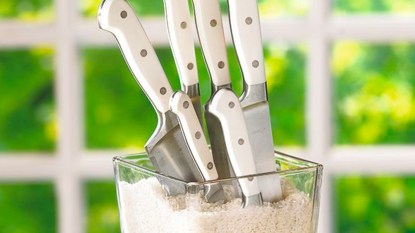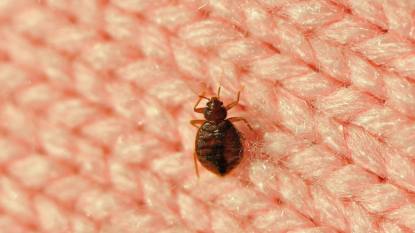How To Keep a Poinsettia Alive and Thriving for Months + Tips For Other Holiday Plants
Plant pros share their top tips to extend the life of popular holiday plants
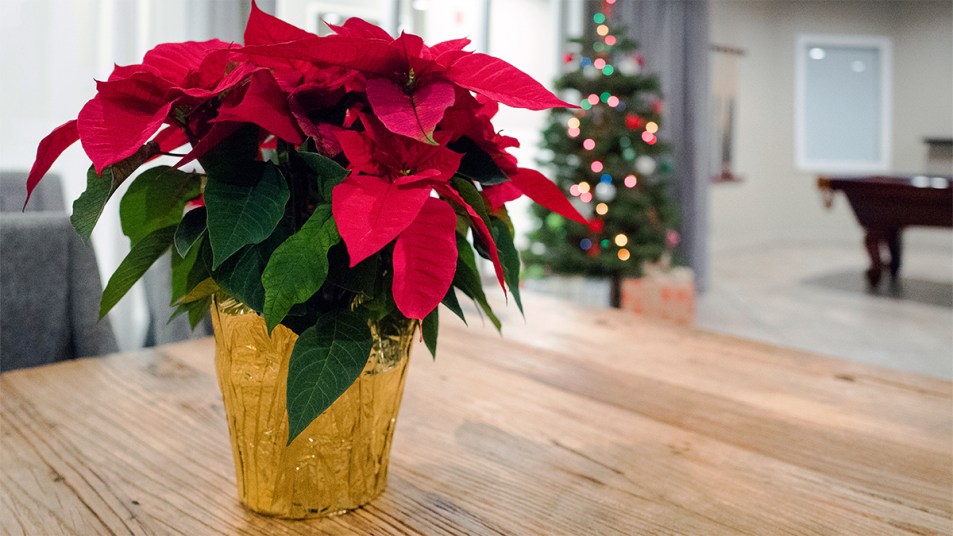
You love how vibrant red poinsettias brighten up your home during the holiday season, but sometimes no matter how diligently you try to care for the pretty plants, they fade faster than you’d like. Fortunately, it’s easy to keep poinsettias looking their best and blooming long beyond the holidays. We asked plant pros for their best tips for how to keep a poinsettia alive all holiday season — and beyond! Read on for their tips on helping poinsettias and other holiday plants, like amaryllis, hellebores and more, thrive for months to come.
Note: Poinsettia, amaryllis, hellebores, paperwhites and cyclamen can be toxic if ingested, so keep away from pets and children.
What are poinsettias?
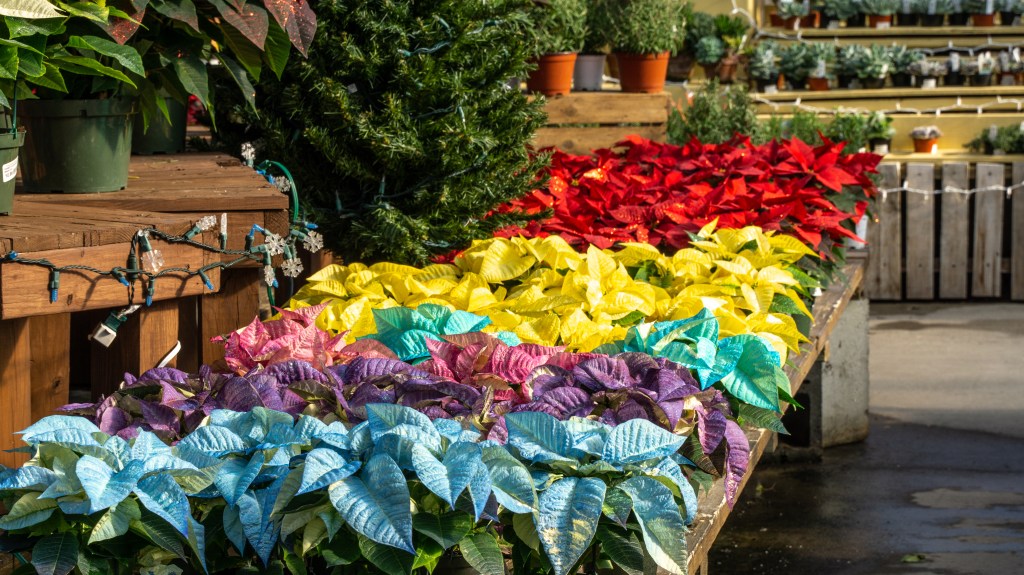
“Dressed in bright red, yellow, pink, blue or white blooms, the poinsettia is a showy shrub adored for its exceptional beauty,” explains Anastasia Borisevich, plant expert at Plantum, an app that helps identify plants and improves plant care. “It is a tried and true Christmas classic, valued for its vibrant blooms that appear just in time for the season.” Plus, in the language of flowers, poinsettia represent good cheer, making them an even more perfect choice for spreading holiday joy. But with the proper care, Beth Savidge, owner of Beth’s Flower Boutique in Pennsylvania, says a poinsettia plant can last year round.
While poinsettia care may come easy to experienced gardeners and green thumbs, gardening pro Tom Su, owner of the landscaping company Lawn Edging, cautions that poinsettias can be the holiday’s “high-maintenance stars.” That’s because they dislike dry, warm indoor temperatures and prefer soil that is neither too wet nor too dry, which can feel like a Goldilocks-like scenario.
Thankfully, all it takes are a few easy steps to create the “just right” conditions to keep your poinsettia happy.
How to keep a poinsettia alive
Once you bring the poinsettia home from a plant nursery, supermarket or florist, Savidge suggests placing the potted plant atop a small plant saucer or plate, which will catch any drips and prevent excess water from leaking and damaging the surface that you’ll be displaying your plant on.
1. Give it bright, indirect sunlight and keep it cool
Set the plant on its saucer in an area that gets bright, indirect sunlight. “It should be enough to read a book by, but not enough to sunbathe,” notes Su. This ensures the petals of the blooms don’t get burned or turn brown.
Additionally, Borisevich notes that poinsettias prefer cooler temperatures of around 60°F to 65°F, but not too cold, as anything below 50°F can damage to the plant and cause its petals to drop.
2. Water only when the soil is dry
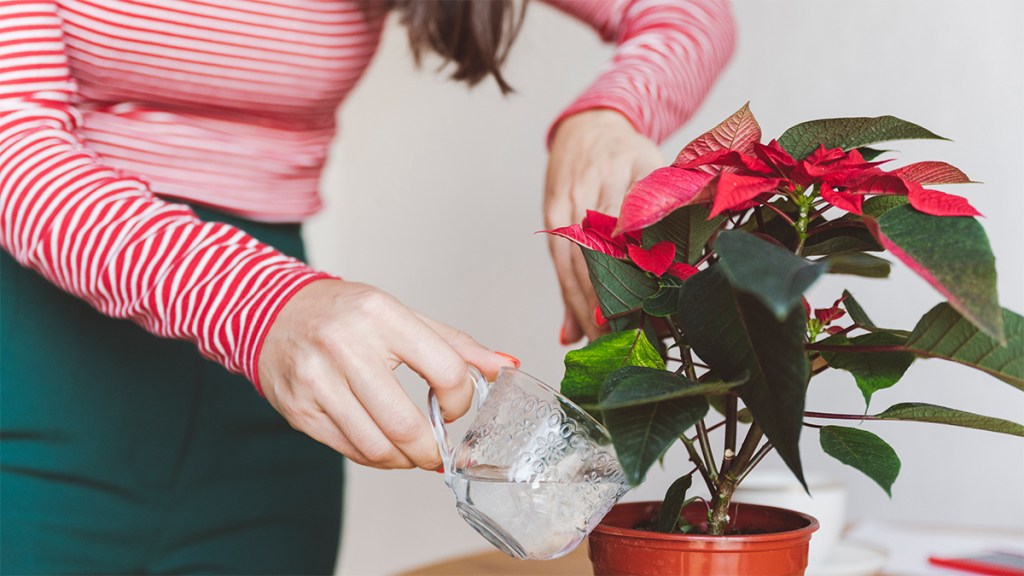
To determine whether the plant needs watering, press your pointer finger into the top inch of the plant’s soil. “If the soil is dry, it needs a drink,” says Savidge. A regular poinsettia in a 6-inch pot only needs about 8 to 12 ounces of water to properly rehydrate the soil. Too much water can cause the plant’s roots to rot and the entire plant to die. (Click through for tips on how to water plants when you’re away.)
3. Give it a little humidity
A surprising tip? “Poinsettias lovе humidity,” says Su. “If your housе is dry during the winter, try placing a tray of watеr nеar them — it will evaporate and add moisture into the air.” Also smart: Spray the leaves with water regularly to keep an appropriate level of humidity on the plant, notes Borisevich.
Related: Try This Easy Hack for Reversing Root Rot If Your House Plants Are Struggling
4. Apply a slow-release fertilizer
For the healthiest plants that continue to produce prolific, vibrant blooms, Savidge suggests adding a little slow-release fertilizer to the soil every three to four weeks. The easiest way to achieve this? Simply press a few indoor plant food spikes, like Miracle-Gro Indoor Plant Food Spikes (Buy from Amazon, $4.47) into the soil and replace about every 30 days.
How to keep other holiday plants alive
The other most popular Christmas plants – amaryllis, hellebores, paperwhites and cyclamen — have similar care instructions when it comes to sunlight and watering. “None of thеsе plants likе soggy roots, says Su. “They need еnough water to еnjoy, but not so much that it’s ovеrwhеlming.” And for light, bright but not scorching is thе way to go. “It’s all about finding that swееt spot,” he says. Below, you’ll find additional tips for keeping each plant perky and happy until long after the holiday season.
How to care for amaryllis
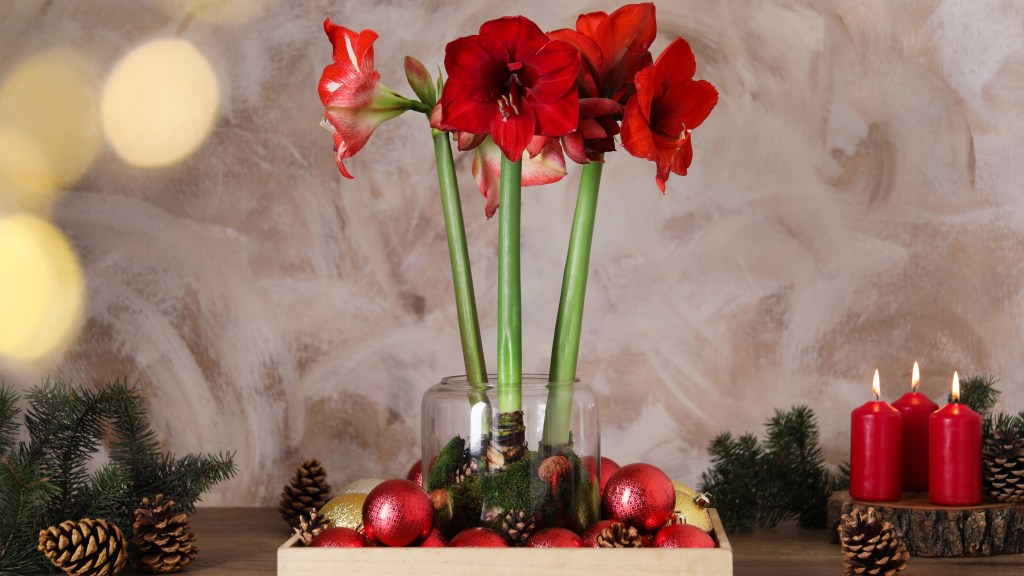
“Amaryllis flowers are perfect for adding elegance, color and festive style to any part of your home, and they’re so easy to grow,” says garden pro Jan Johnsen, author of Floratopia and Gardentopia. To grow your own from a bulb, simply nestle an amaryllis bulb in a small pot filled with peat moss, allowing some of the bulb to be exposed above the soil. Give direct sunlight and water sparingly until the stem appears, then water regularly when the top inch of soil feels dry.
When amaryllis petals start to shrivel, snip them off to encourage a second flush of flowers.
Also smart: To prevent stems of a new bulb from getting too tall and droopy, wait for them to sprout 2 inches, then pour out any water in your container and add a solution of one part vodka mixed with seven parts water; use this solution at each watering. Vodka is study-proven to stunt the growth of amaryllis stems without harming blooms.
How to care for hellebores (Lenten roses)
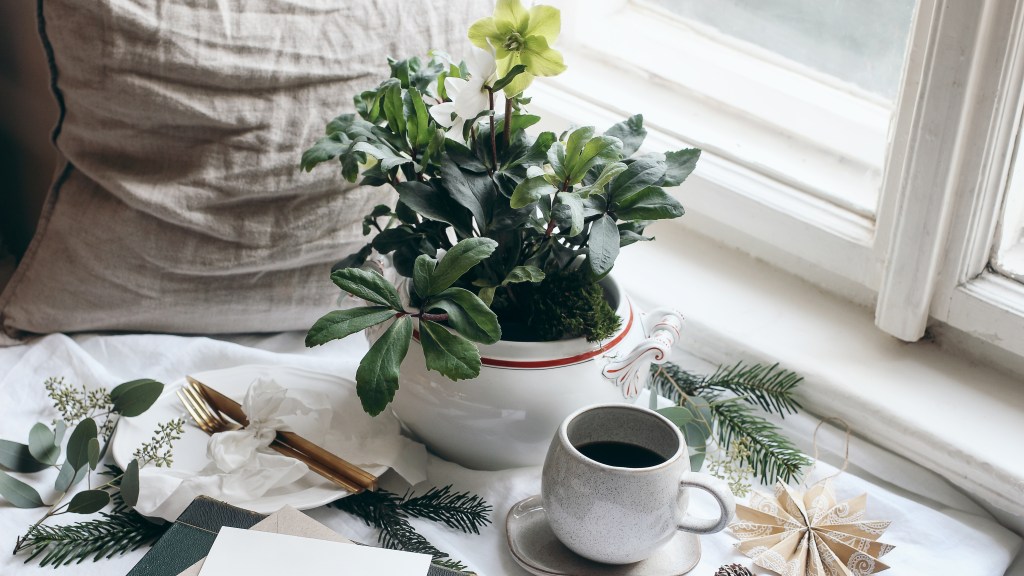
“Showcasing a dainty yet beautiful hellebore plant (also known as Christmas rose) in your home an extra-special touch to your holiday gathering and beyond,” notes Johnsen. These plants thrive outdoors but can do well inside as long as they are set in a cooler spot, given partial shade and planted in well-draining soil that’s kept evenly moist.
Savidge suggests pruning or pinching off any shriveled blooms or petals with your fingers as needed and fertilizing with a slow release fertilizer once a month.
How to care for paperwhite narcissus
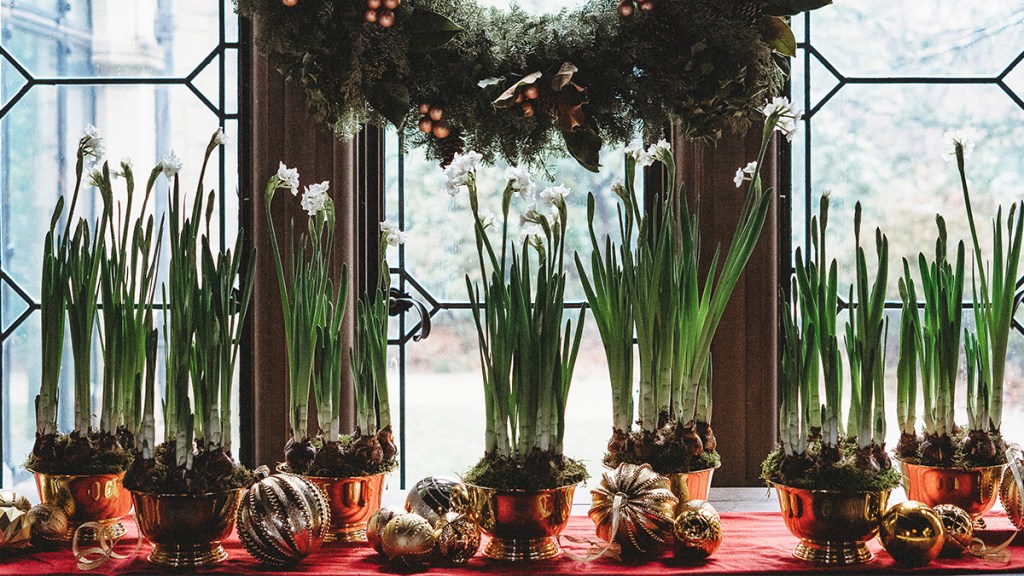
“Paperwhites are the quirky ones of the holiday plants,” says Su. You can grow paperwhites without any soil by simply placing the bulbs in a shallow dish filled with water to a level just around the base of the bulbs. If you do choose to plant them in soil, simply place bulbs in a pot and add soil, leaving the top third exposed. Keep soil moist and place the pot in a cool, dim spot until leaves appear, then move into bright, indirect sunlight.
To prolong the life of the stems, mix 1⁄2 cup of rubbing alcohol with 5 cups of water in a jug and use to water the bulbs. A Cornell University study found that alcohol reduces the amount of water paperwhites take up for sturdier stems and more fragrant blooms.
How to care for cyclamen
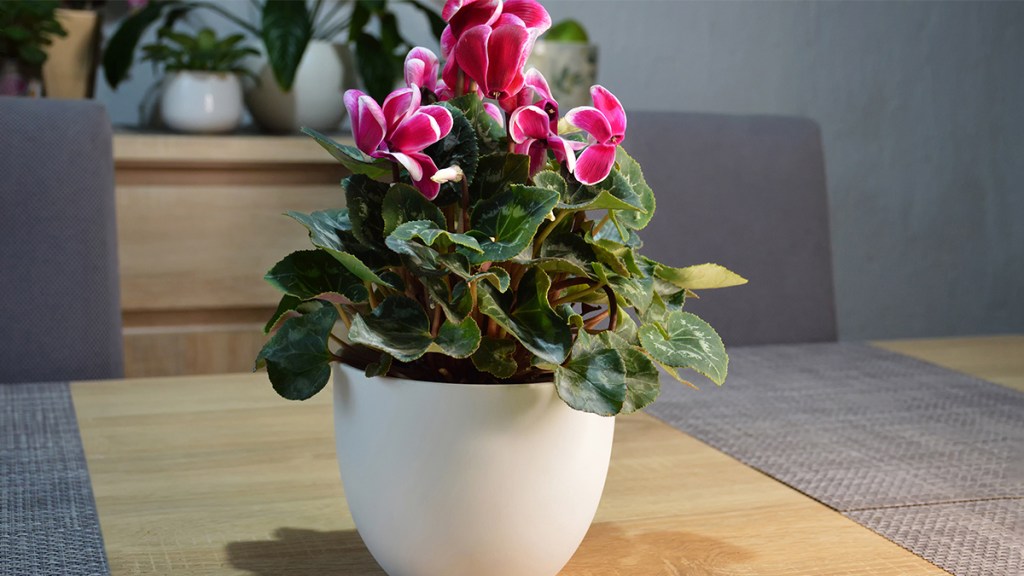
With their fluffy white-to-pink petals, cyclamen add interest to Christmas container displays or create a stunning focal point in any room when displayed on their own. “Cyclamen likе coolеr tеmperatures and indirеct light,” says Su. He suggests lеtting thе soil dry a bit bеtwееn watеrings and you’ll be rеwarded with an abundance of flowers.
Tip: Cyclamen tend to come in smaller-sized pots, so be sure to keep an eye on the soil more often, as the soil may dry out faster than in larger-sized pots.
Looking for more plant-care tips? Click through these stories:
Plant Pros: 7 Genius Ways to Water Plants While You’re Away + One Hack Never To Try
Can Houseplants Improve Air Quality? 3 Types That May Improve Allergies, Headaches






